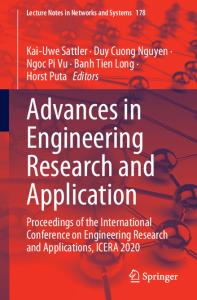Binary electrochemical mineralization of heterocyclic nitrogenous compounds: parametric optimization using Taguchi metho
- PDF / 1,088,355 Bytes
- 15 Pages / 595.276 x 790.866 pts Page_size
- 60 Downloads / 362 Views
RESEARCH ARTICLE
Binary electrochemical mineralization of heterocyclic nitrogenous compounds: parametric optimization using Taguchi method and mineralization mechanism Ajay Devidas Hiwarkar 1,2 & Rohit Chauhan 1 Indra Deo Mall 1
&
Ritesh Patidar 1
&
Vimal Chandra Srivastava 1
&
Seema Singh 1 &
Received: 28 May 2020 / Accepted: 28 September 2020 # Springer-Verlag GmbH Germany, part of Springer Nature 2020
Abstract The main objective of the present work was to understand the interactive behaviour of various operating parameters including concentration of pollutants during binary electrochemical mineralization of the two nitrogenous heterocyclic pollutants in the aqueous solution. Indole and pyrrole were selected as pollutants, whereas Pt/Ti was selected as anode and cathode. The effects of different operating parameters like current density, solution conductivity, initial concentration of the pollutants and time were studied. Taguchi method was used to optimize these operating parameters for obtaining the ultimate rate of degradation for the nitrogenous compounds. There were basically two responses, i.e. chemical oxygen demand (COD) degradation and specific energy consumption. These responses were maximized and minimized, respectively. At the optimum condition, removal efficiencies of pyrrole, indole and COD were found to be 46.1%, 62.4% and 61.4%, respectively. The optimum value of specific energy consumption was found to be 159.5 kWh per kg COD removed. Possible mineralization pathways are also proposed on the basis of the identified intermediates by gas chromatography coupled with mass spectroscopy. The operating cost was also calculated for the binary lab-scale treatment of the indole and pyrrole and compared with reported cost analysis for the electrochemical treatment. Keywords Binary mineralization . Indole . Pyrrole . Mechanism . Cost analysis
Introduction Nitrogenous heterocyclic compounds are one of the most important classes of chemicals found in the wastewater discharged from various manufacturing industries. These heterocyclic compounds are also produced at major scale by industrial
activity such as gas oil fractions derived from sand and coal liquid that have higher nitrogen concentration than those of petroleum fractions. Spills of crude oil industries are known to contain heterocyclic organic compounds and polycyclic aromatic hydrocarbons that contaminate surface and groundwater (Novotny et al. 1981; Paudler and Cheplen 1979; Gonul and
Responsible Editor: Weiming Zhang Electronic supplementary material The online version of this article (https://doi.org/10.1007/s11356-020-11057-8) contains supplementary material, which is available to authorized users. * Vimal Chandra Srivastava [email protected]; [email protected]
Seema Singh [email protected] Indra Deo Mall [email protected]
Ajay Devidas Hiwarkar [email protected] Rohit Chauhan [email protected]
1
Department of Chemical Engineering, Indian Institute of Technology, Roorkee, Roorkee, Uttarakhand 247667,
Data Loading...











